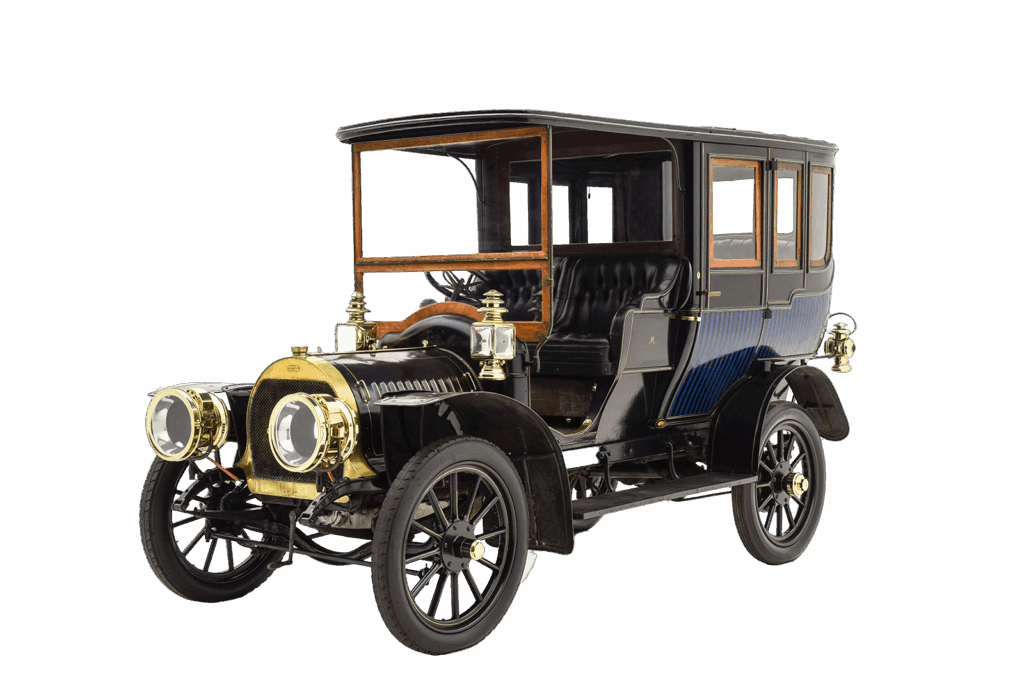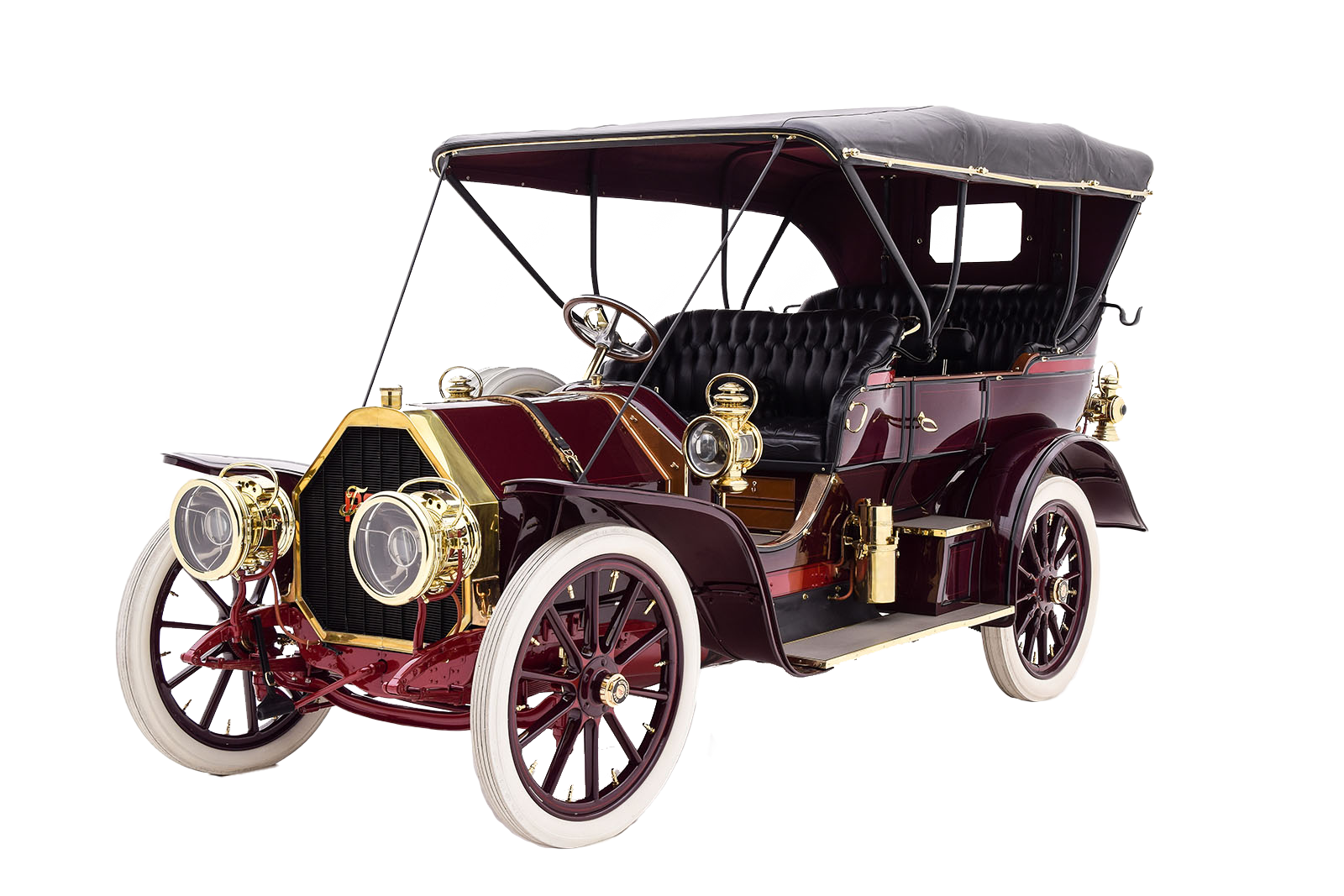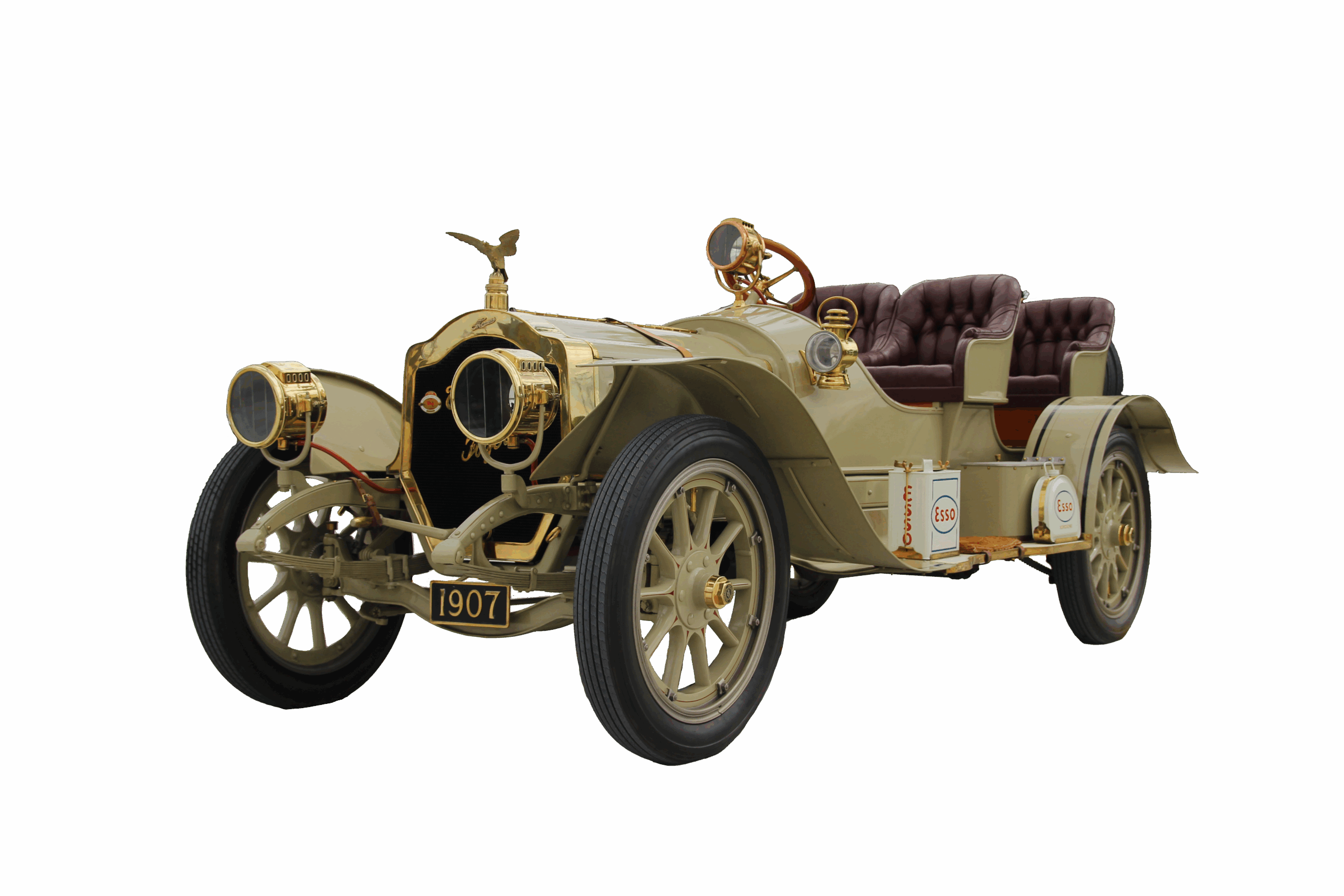One of the last Rainiers built in New York, this 1907 Model C is not just a car, it’s a survivor of America’s earliest age of motoring luxury. First owned by Paul M. Howard, a prosperous wagon builder from Mansfield, Ohio, it was ordered with an extravagant convertible limousine body by C.P. Kimball of Chicago. That level of craftsmanship didn’t come cheap, the body alone cost more than $2,000, a staggering sum in the early 1900s, and a clear symbol of Howard’s success. He treasured the car for nearly four decades, keeping it until 1945.
Towering at over seven feet tall, the Rainier Model C was the very definition of versatility and prestige. Advertisements of the day boasted of removable roofs, “summer doors,” and accessories that read like a wish list of Edwardian elegance: brass lamps, jump seats, electric fixtures, a smoking case for gentlemen, a toilet case for ladies, and even a carriage clock.
Remarkably, this 1907 Rainier Model C still carries much of its original character, from its upholstery and brass lamps to the intercom tube used for communication between chauffeur and passengers. Underneath, its 280 cubic inch T-head four-cylinder engine, rated at 30/35 horsepower, delivers the kind of power and refinement that made Rainier one of the most prestigious names of its time.
More than a rare relic, this Rainier is a living window into America’s automotive dawn. With its imposing design, bespoke luxury, and storied ownership, the 1907 Rainier Model C stands as one of the most important early American luxury cars, a bold statement of craftsmanship, ambition, and the promise of the automobile.
Company History
At the dawn of the 20th century, John T. Rainier carved his place in automotive history by transforming the Brooklyn-based Vehicle Equipment Co., a builder of electric trucks and sightseeing buses, into a name associated with some of the most exclusive cars of its era. After experimenting with a few V.E.C.-branded vehicles, Rainier introduced the first automobile to proudly bear his name in 1905.
The early Rainier motorcars were assembled in Flushing, New York, using engines and chassis supplied by Garford of Elyria, Ohio. By 1906, the brand was producing large, powerful cars with a 104-inch wheelbase and a 30/35 horsepower four-cylinder engine. With prices starting at $4,000 in 1906, climbing to nearly $6,000 by 1910, Rainiers were among the most expensive American cars of their time.
Praised for their engineering and refinement, Rainiers earned success in hill climb competitions, securing a reputation for performance as well as prestige. They quickly became known as “The Pullman of Motor Cars”, a fitting title for a marque that blended opulence with capability.
In 1907, Garford’s contract with Studebaker cut off Rainier’s supply of engines and chassis. Determined to continue, Rainier relocated to Saginaw, Michigan, hiring a former Garford engineer who developed even larger engines, including a 50-horsepower option.
Despite ambitious plans to sell 300 cars, financial struggles limited production to only about 180 vehicles. In 1910, Rainier went bankrupt, but the brand’s prestige attracted the attention of William C. Durant, who folded Rainier into his growing enterprise, General Motors. By 1911, the Rainier name disappeared, absorbed into GM’s lower-cost Marquette brand.



